Request A Car Rental
Travelling to Mongolia and need a car rental plus extra equipments?
Visiting Mongolia: Top Tips for an Authentic Adventure in 2024
Planning to visit Mongolia? From the best travel times and navigating local transport to cultural etiquette and must-see events, this guide covers the vital aspects you need for a memorable journey when visiting Mongolia. Here, you’ll find concise, practical advice to help you prepare, pack, and fully embrace the unique experiences Mongolia offers, ensuring your trip is as smooth as it is breathtaking.
Key Takeaways
- Timing your visit to Mongolia is crucial, with late May to late August being ideal for summer travel and shoulder seasons offering unique experiences like eagle hunting festivals. Book tours in advance for the best experience.
- Understanding transportation is key in Mongolia. Flights, self-driving, and public transport each come with their own tips and precautions, such as avoiding travel during high winds, renting sturdy vehicles, and using the UB Smart Bus app within Ulaanbaatar.
- Cultural immersion is a significant aspect of visiting Mongolia. From staying in traditional ger camps to participating in local festivals like Naadam, travelers should respect local customs, enjoy Mongolian delicacies, and ensure they have recommended vaccinations and travel insurance.
Planning Your Mongolian Adventure
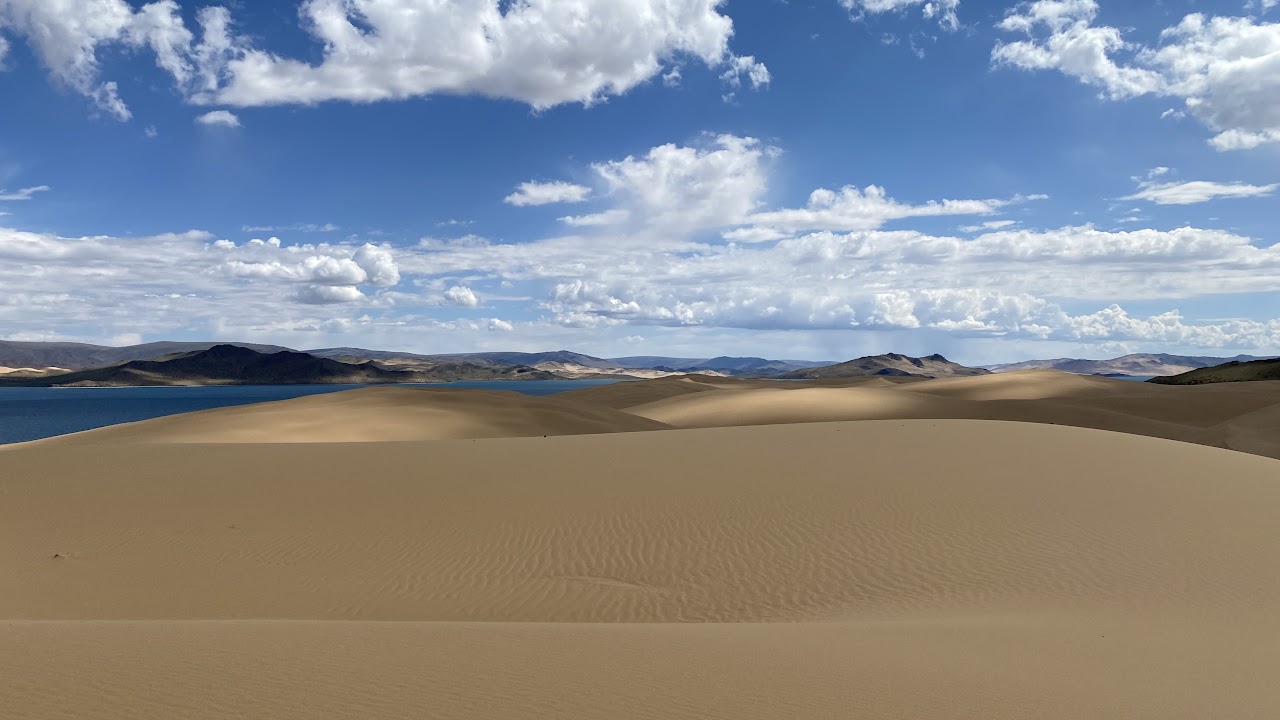
When you decide to visit Mongolia, timing is key. The best time for summer travel is from late May to late August, allowing you to fully enjoy the country’s stunning landscapes and vibrant festivals. Do note that July is the peak tourism month due to the famed Naadam festival, a lively celebration of Mongolian culture.
For those who prefer fewer crowds and budget travel, the shoulder seasons of April to May and September to October are recommended. These periods also align with exciting events like eagle hunting festivals, providing a unique Mongolian experience. Regardless of when you choose to embark on your Mongolia tour, remember to organize the tour well in advance to secure the best drivers, guides, and vehicles.
From the lively streets of Ulaanbaatar city to the serenity of the Gobi Desert and the breathtaking Mongolian steppe, your Mongolia itinerary should embrace the country’s diverse offerings. Consider booking a tour company that offers a variety of experiences, from horseback riding adventures with a nomadic family to exploring rural Mongolia. With careful planning, your trip to Mongolia will be an unforgettable adventure!
Navigating Through the Land of the Eternal Blue Sky
Navigating this fascinating country can be a thrilling part of your journey. Whether you’re exploring the bustling streets of Ulaanbaatar or venturing into the remote corners of the Gobi Desert and Mongolian steppe, understanding the transportation options is crucial.
Let’s delve into the specifics of air travel, self-driving, and public transportation to make your trip to Mongolia a smooth ride.
Air Travel Tips
For U.S. travelers, Turkish Airlines and Korean Air are recommended for flying to Mongolia. Due to the lack of direct flights from the U.S., you’ll need to connect through international hubs like:
- Seoul
- Beijing
- Tokyo
- Berlin
- Frankfurt
- Istanbul
- Moscow
If you opt for Turkish Airlines, you can take advantage of their beneficial layover program, which offers a free 4-star hotel stay during the connection in Istanbul.
When it comes to domestic flights within Mongolia, caution is advised. The summer travel season sees an increase in flight frequency, but also higher risks of delays and cancellations due to seasonal high winds. It’s always a good idea to have travel insurance that covers such unforeseen circumstances.
The Road Less Traveled: Self-Driving in Mongolia
While self-driving in Mongolia can be an adrenaline-pumping experience, it’s crucial to consider the challenges it poses. The majority of roads outside Ulaanbaatar are unpaved, making an off-road vehicle a necessity. Reputable car rental companies like Avis and Sixt offer durable vehicles such as the Toyota Land Cruiser or Russian UAZ, ideal for Mongolia’s terrain.
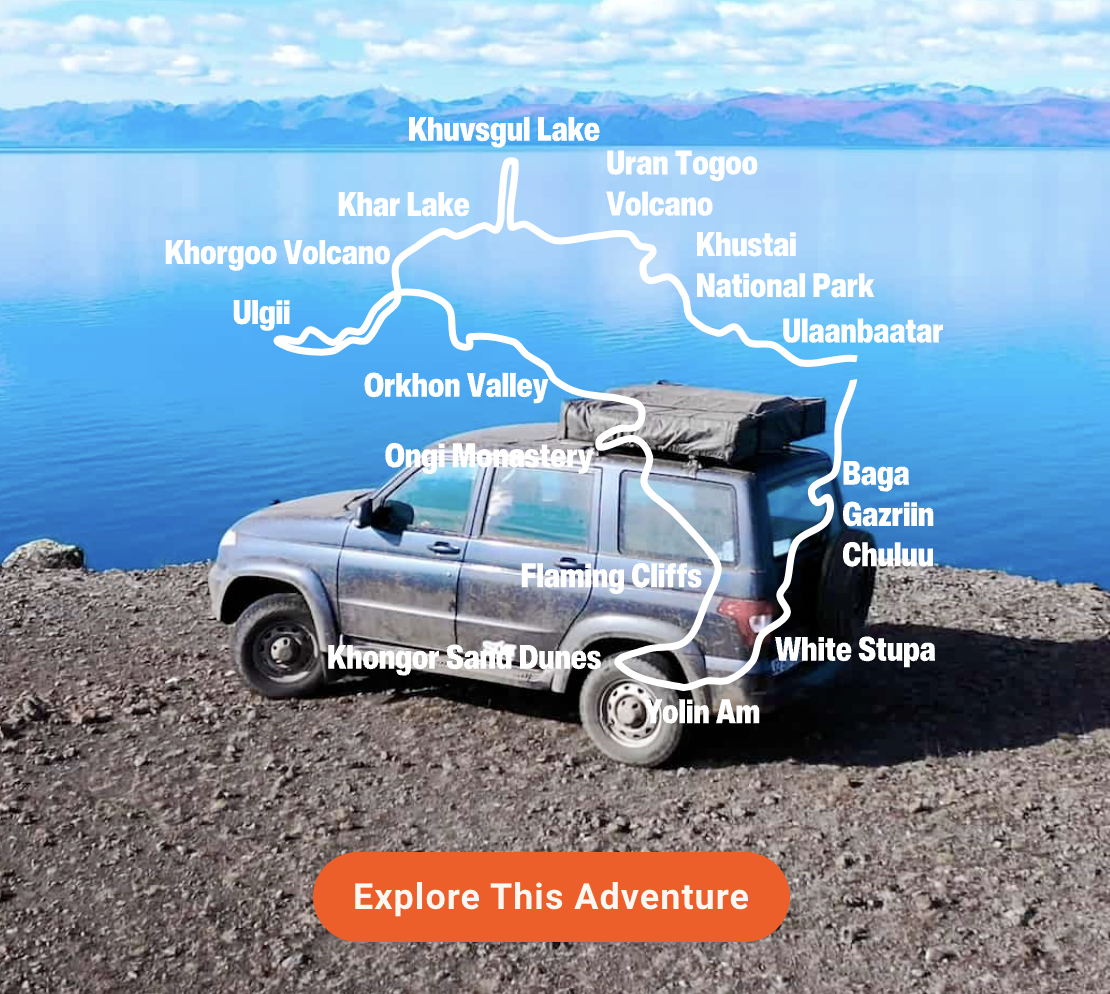
However, when venturing into the Mongolian steppe or Gobi Desert in your own car it can be tricky to select the right route and to find an accommodation when needed. For this we recommend to carry camping gear and approach the trip a bit like a nomad. Set up camp in the afternoon in a beautiful spot that you will have endless options around you in all corners of the country and enjoy crystal clear skies during the night. In addition, the vast and remote landscapes can make navigation tricky. To ensure a smooth journey, it’ is easier to book a selfdrive travel package from the car rental companies or here with Escapetomongolia. A reliable navigation system also off the main roads will be provided.
Public Transport Protocols
Within Ulaanbaatar, a variety of public transportation options are available, from taxis and buses to electric trolleys. A bus ride costs 500 MNT per ride, and taxis typically charge 1,500 MNT per kilometer. The U Money Smart Card is available for payment at bus kiosks and CU convenience stores, making it convenient for users to use..
However, it’s worth noting that public transport in Ulaanbaatar can present safety risks. Overcrowded conditions in buses and minivans, potential for pickpocketing, and navigating sidewalks are just a few challenges. Therefore, using official taxis or alternative shared transport modes like Jet scooters and the Hi Sainuu bike sharing app can be safer options.
To aid your navigation, the UB Smart Bus app provides real-time information on bus stops, waiting times, and routes.
Accommodation Insights: From Ger Camps to Urban Stays
One of the most enchanting aspects of your Mongolian adventure could be your stay in a traditional ger camp. Set in picturesque rural locations close to natural attractions, these camps offer a unique insight into Mongolian culture. Modern gers feature:
- collapsible, portable structures with white canvas covers
- beds, furniture, and a wood-burning stove
- some even offer ensuite bathrooms if arranged beforehand
Most ger camps offer the following amenities:
- Central restaurant or lodge, where meals that blend Mongolian tradition with European influences are prepared using local ingredients
- Electricity (usually provided, but may be supplied by generators in more secluded areas)
- Bathroom facilities with modern amenities (shared)
- Hot water availability (sometimes restricted to certain times or seasons)
It is advisable to carry flashlights in case of limited electricity supply.
For those feeling more adventurous, camping using your own tents and gear is also an option, particularly when venturing into more remote areas of Mongolia.
Cultural Immersion and Etiquette
Immersing in Mongolian culture involves understanding and respecting local customs and traditions. Here are some customs to keep in mind:
- Upon approaching a ger, it’s customary to articulate ‘Nokhoigo Khorioroi’ as a greeting.
- Remember to avoid stepping on the threshold when entering a ger.
- Men should enter with a hat on and go to the left, while women should go to the right.
- Partake in the snuff as a gesture of acceptance.
By following these customs, you can show respect for Mongolian culture.
When visiting a foreign country, it’s important for a foreign national to be aware of and respectful of local customs and traditions. Here are some tips for navigating cultural norms in this particular country:
- When handling items, use your right hand or both hands.
- Avoid stepping over sacred items.
- Offer a handshake if you need to apologize for any missteps.
- Participate in the customary vodka ritual.
- Accept offered sweets or gifts as a mark of respect.
- Be mindful of communication style by answering questions about oneself and avoiding direct questions.
- Avoid pointing.
- Avoid improper disposal of waste in a fire.
By following these guidelines, you can show respect for the local culture and have a more enjoyable experience.
By recognizing Mongolian emphasis on loyalty, friendliness, frankness, and independence, you can engage more deeply with the pastoral lifestyle of nomadic herders. When visiting religious sites, remember to dress modestly, remove headwear and shoes, walk in a clockwise direction around sacred objects, and handle religious items respectfully.
Savoring Mongolian Delicacies
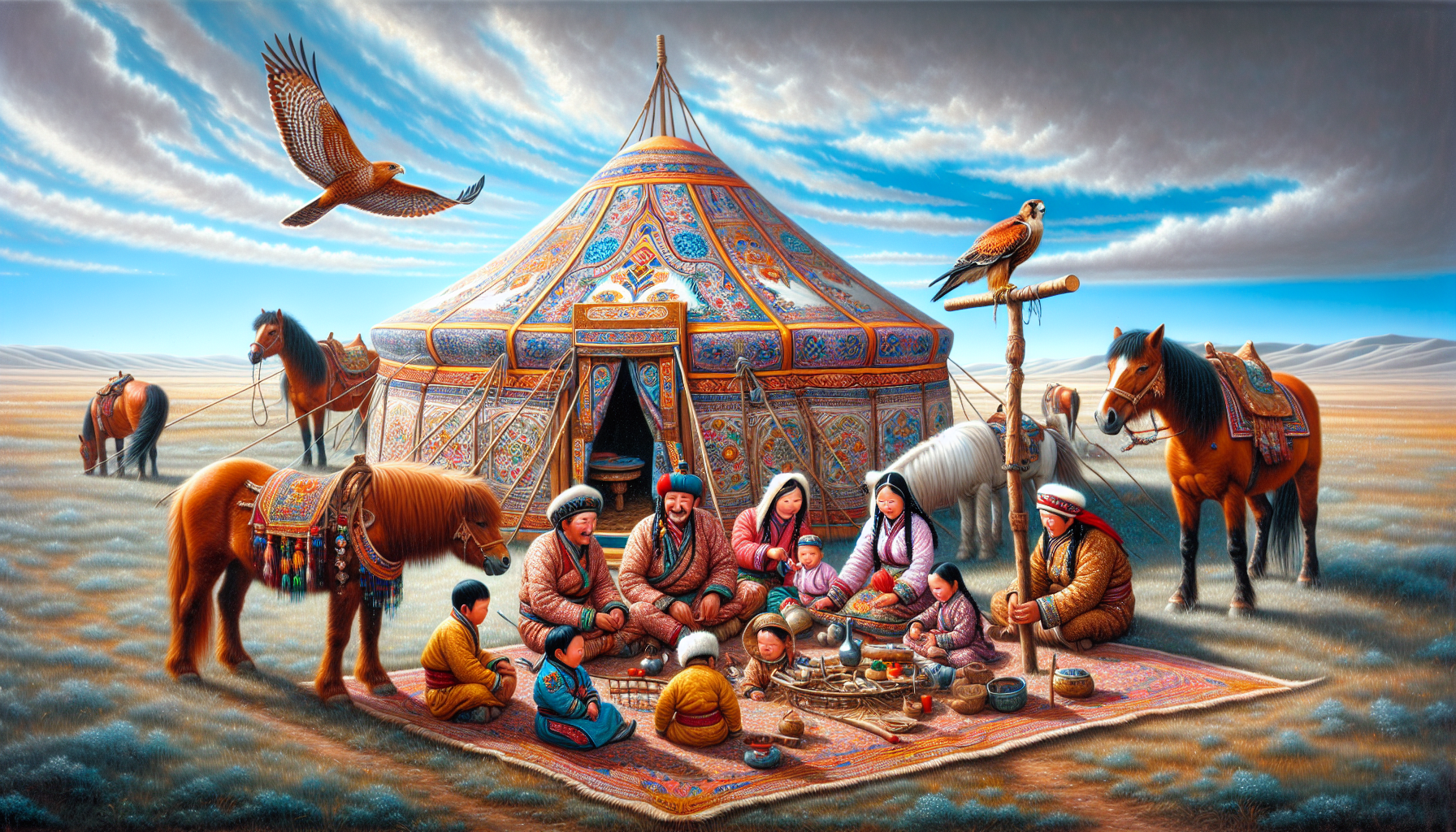
A trip to Mongolia wouldn’t be complete without savoring traditional Mongolian cuisine. Homemade dishes such as buuz (steamed dumplings), tsuvian (stir-fried noodles), and khuushuur (fried meat pastries) offer a delightful introduction to the culinary culture. And if you’re visiting the countryside, you might get the opportunity to try airag, also known as fermented horse milk. Just remember to exercise caution as it contains bacteria unfamiliar to foreign digestive systems.
Mongolian eating practices often involve communal dining, such as:
- sharing a bowl of boiled meat from which each person cuts their own pieces to eat meat
- passing dishes around the table for everyone to try
- using your hands to eat certain dishes
Social customs also include the offering and accepting of vodka. Even if you don’t drink alcohol, it’s customary to raise the cup to your lips to demonstrate your willingness to participate in the tradition.
Essential Gear for the Mongolian Climate
Mongolia’s climate can be as diverse as its landscapes, from the hot Gobi Desert to the chilly nights in the Mongolian steppe. Therefore, packing layers of clothing is essential. Include thermal underwear and a variety of socks for different temperatures, along with a waterproof shell layer for wind and rain. Footwear should be chosen based on your planned activities. Hiking boots are ideal for trekking, while comfortable shoes are recommended for casual walking.
Apart from clothing, packing the right accessories can make your trip more comfortable. Here are some essential accessories to include:
- Insect repellent with DEET
- Suncream
- Compact toiletries
- A small medical kit for emergencies
- A LED headtorch
- A travel adapter
- A power bank
- A solar charger
These items will come in handy, especially in remote areas with potential power outages and lack of electricity, helping you save money.
Remember to manage your luggage space wisely. Categorize items as ‘essential,’ ‘useful,’ or ‘luxury,’ and leave spare capacity for items worn during transit or souvenirs.
Health and Safety Abroad
Ensuring a safe and healthy trip to Mongolia starts at home. Consult your healthcare providers at least a month before traveling to receive necessary vaccines and medicines. Recommended vaccinations for Mongolia include:
- Hepatitis A and B
- MMR (measles, mumps, rubella)
- Rabies for those at risk
- Typhoid, especially for travelers visiting rural areas or staying with friends or relatives.
Travel insurance is another crucial aspect of your travel preparations. Your policy should cover medical emergencies, evacuation, and trip cancellation, accommodating unforeseen health and safety issues while abroad.
While in Mongolia, ensure your safety by:
- Keeping valuables discreet with a passport pouch
- Boiling or purifying water in rural areas
- Being vigilant especially at night
- Using official taxis for safer transportation
- Checking current travel advisories before your visit.
Festivals and Events Not to Miss
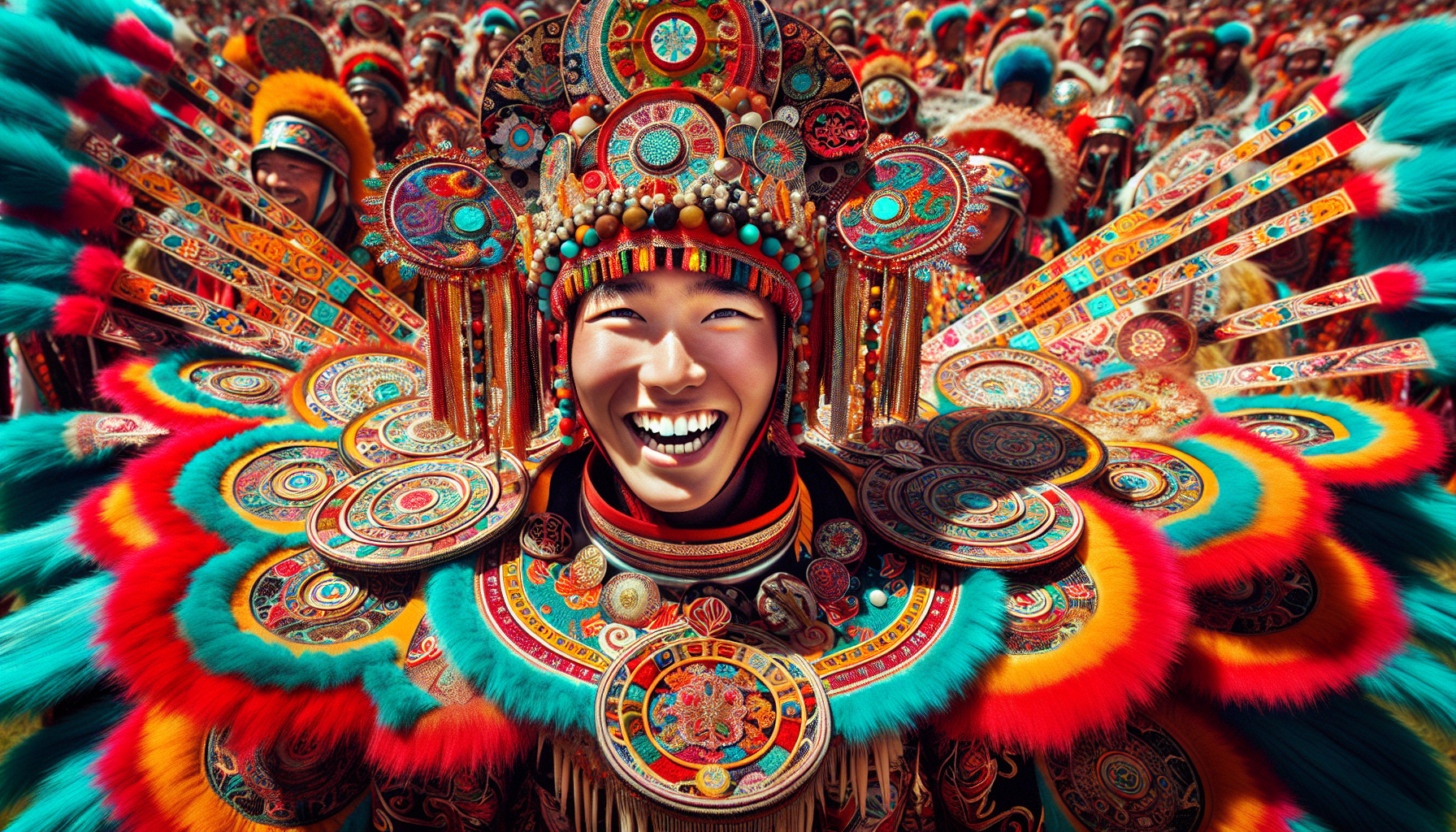
Mongolia’s vibrant cultural heritage is best experienced through its unique festivals and events. The Naadam Festival, celebrated every summer in mid-July, is a UNESCO Intangible Cultural Heritage event. It features traditional games such as horse racing, wrestling, and archery, offering a colorful spectacle unlike any other.
But the cultural celebrations in Mongolia aren’t limited to the summer. From the wintry Ice Festival at Lake Khovsgol in March to the Golden Eagle Festival in early October, there’s always something to look forward to throughout the year. These events offer travelers the opportunity to participate and observe activities like:
- horse-sled races
- ice rally-driving
- camel polo
- the ancient art of falconry with eagles in the Altai mountains.
So, whether you’re planning your trip during the warmer months or the cooler periods, there’s a cultural event waiting for you in Mongolia.
Money Matters in Mongolia
When it comes to financial matters in Mongolia, it’s important to familiarize yourself with the local currency. The Mongolian Tugrik, abbreviated as MNT, is the official currency for all domestic transactions. The exchange rate is approximately 3,455 MNT to one US Dollar. While the Tugrik is used for domestic transactions, the US Dollar may occasionally be accepted, especially in urban areas like Ulaanbaatar.
ATM withdrawal limits in Mongolia are generally 500,000 MNT, with some terminals allowing 800,000 MNT. Therefore, it’s advisable to carry small bill denominations, such as ten 1,000 MNT bills, four 5,000 MNT bills, and two 10,000 MNT bills for smaller transactions. Taxi drivers and local businesses accept Mongolian Tugrik (MNT) for services, making it convenient for travelers. However, ensure you exchange enough cash before leaving the capital, especially when headed to the countryside.
Communication Essentials
Staying connected in Mongolia requires some planning. While cell phone coverage is widespread, there are still some dead zones, and service in the countryside can be inconsistent. An eSIM might be a more convenient option and works as well as a physical SIM. Here are some providers where you can purchase a SIM card:
- Unitel
- MobiCom
- Skytel
- gmobile
The cost of a SIM card and a plan in Mongolia is typically less than 40,000 tugrik, and the best place to obtain one is on the 5th floor of the State Department Store in Ulaanbaatar.
Given that English is not widely spoken, especially outside of Ulaanbaatar, travelers are advised to use translation apps and phrasebooks as practical tools for communication. Besides Mongolian, Russian and English are the second and third most spoken languages in Mongolia, which could also aid in communication.
The Adventurer's Checklist
A well-prepared adventurer is a successful one. Being in remote areas of Mongolia requires preparedness for vehicle breakdowns or other emergencies without immediate assistance. Carrying a GPS tracker device provides an extra level of safety by enabling others to locate your whereabouts in Mongolia.
When packing for your Mongolia tour, consider the following:
- Clothing that allows for layering, with thermal underwear for cold nights and lighter materials suitable for warmer conditions
- A large backpack or suitcase for most belongings, complemented by a smaller bag for valuable and frequently-needed items
- Electronics that are practical and secured to prevent theft
- Basic toiletries in travel-sized containers to save packing space
Equipment like tents and sleeping mats can be rented in Ulan Bator, and such rentals could be a practical option for those camping only a few nights. Footwear should be chosen to support the intended activities in Mongolia, such as durable hiking shoes and comfortable shoes for casual walking.
Respecting the Environment and Traditions
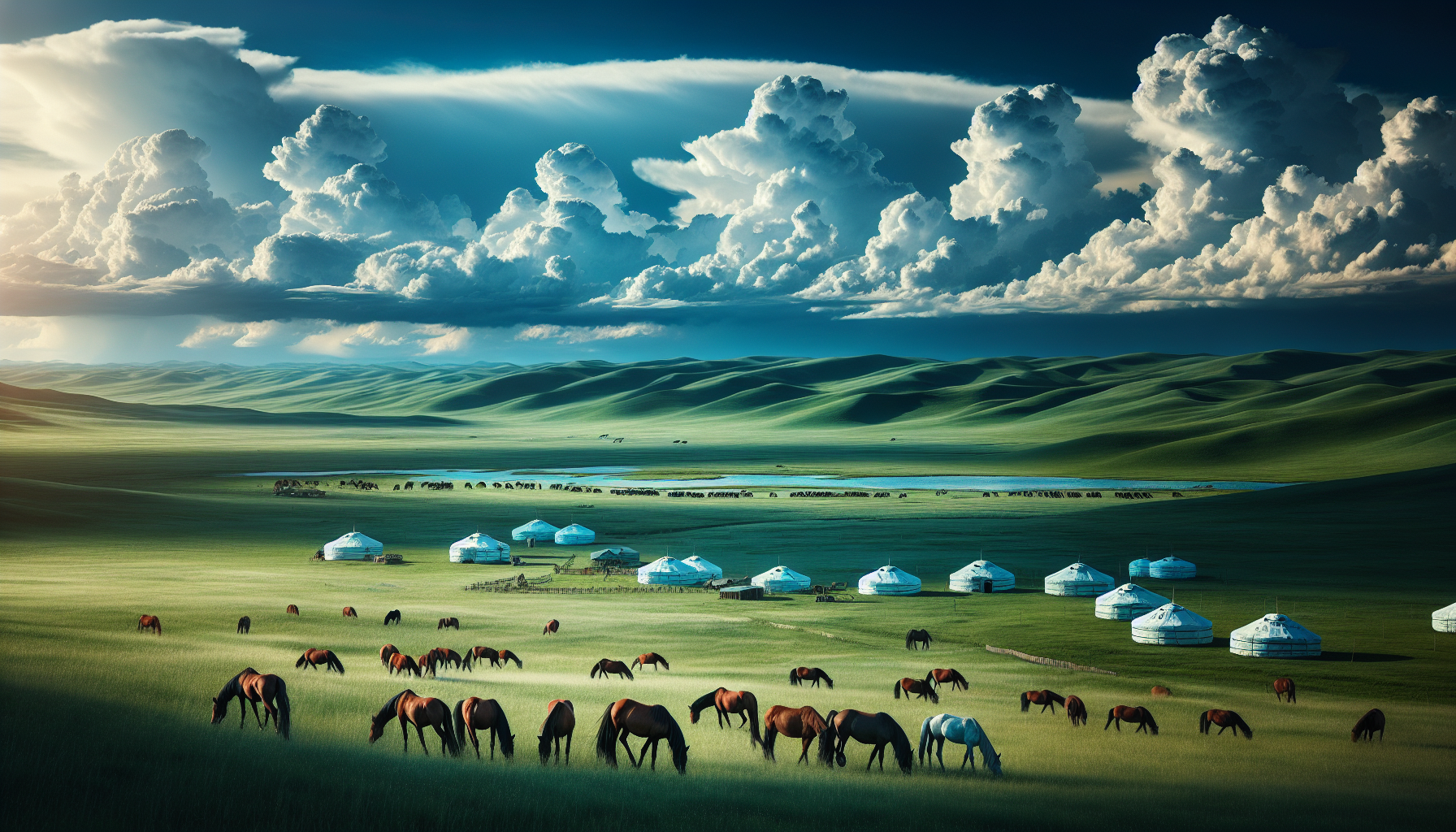
Traveling is not only about exploration but also about respecting the environment and local traditions. As part of responsible tourism, respecting the religious customs of Mongolia is a crucial aspect of your journey. Key Mongolian religious customs include circumambulating stupas, temples, or sacred mountains in a clockwise direction.
As you traverse the vast Mongolian landscapes, you’ll encounter Ovoos, sacred cairns made of rocks. Visitors can participate in local traditions by adding stones to an Ovoo and offering prayers for a safe journey. By engaging in these customs, we ensure our travel not only enriches us but also respects and preserves the traditions of the locales we visit.
Solo and Female Traveler Advice
Mongolia is relatively safe for solo female travelers, though it’s encouraged to follow usual safety precautions. Street harassment, such as stares and catcalls, may occur, especially in areas with active nightlife. Being alert in these situations is recommended.
Alcohol can sometimes escalate situations and compound communication challenges due to language and cultural differences. Therefore, it’s advised for solo and female travelers to keep alcohol consumption to a minimum, especially when staying with a host family to avoid uncomfortable situations. Remember, your safety and comfort should always be your priority.
Beyond the Beaten Track

For those who yearn for a truly immersive experience, venturing beyond the beaten track can be incredibly rewarding. Western Mongolia’s Altai Mountains provide travelers with the opportunity to experience nomadic hospitality and witness the luminous skies and lifestyle of ethnic Kazakhs. Sustainable tourism companies like Nomadic Journeys and 360 Degrees Mongolia offer cultural heritage experiences in the Altai Mountains.
Another intriguing destination is the Chigertei Valley, within Chigertei National Park in Western Mongolia. Here, you can explore vast, untouched natural beauty and engage with local nomadic communities. Delüün Town acts as a gateway for adventurers looking to delve into the remote regions of the Altai Mountains, providing essential amenities and access to natural and cultural sites. By engaging with companies like Nomadic Journeys and 360 Degrees Mongolia, you can ensure your itineraries emphasize the Altai Mountains’ cultural heritage and promote responsible tourism practices.
Summary
From the bustling city life of Ulaanbaatar to the serenity of the Gobi Desert, the sprawling Mongolian steppe to the towering Altai Mountains, Mongolia truly is a land of contrasts. Whether you’re immersing yourself in the vibrant cultural events, savoring traditional Mongolian delicacies, or navigating the vast landscapes, every moment spent in Mongolia promises an enriching experience. So, are you ready to embark on an unforgettable adventure and create your own Mongolian tale?
Frequently Asked Questions
Is mongolia safe?
It's essential to stay vigilant and cautious, as there have been reports of assaults and harassment, particularly during major festivals and the tourist season. Be mindful of your surroundings to stay safe.
What is the best time to visit Mongolia?
The best time to visit Mongolia is between mid-June and late August, during the summer season when you can enjoy sunny days and lush, green scenery.
Is it worth going to Mongolia?
Absolutely, going to Mongolia is definitely worth it. With its captivating landscapes, rich history, and welcoming locals, it offers genuine experiences away from touristy crowds.
Can US citizens visit Mongolia?
Yes, US citizens can visit Mongolia without a visa for stays of up to 90 days, as long as their passport is valid for at least six months beyond their date of arrival. If planning to work, study, or reside in Mongolia, a visa from the Mongolian Embassy in Washington, DC is required.
Is Mongolia friendly to tourists?
Yes, Mongolia is a very friendly and welcoming country to tourists. The people are hospitable, the country is relatively safe, and as long as you respect the local culture and customs, you will have a great experience.
Request A Car Rental
Travelling to Mongolia and need a car rental plus extra equipments?






